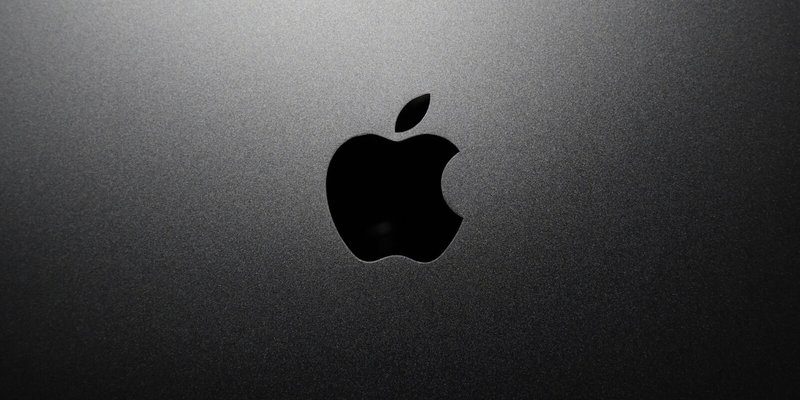Summary: Apple’s June-2025 EU update merges every non-IAP option — link-outs, web-views, and alternative payment processing — into a single “communication & promotion of offers” entitlement. Turning it on means removing in-app purchases. Fees are now 2 % initial-acquisition + 5-13 % Store Services + 5 % Core Technology Commission, which will replace the per-install CTF by Jan 2026. Skipping tier-2 App Store Services halves the Store slice but loses auto-updates, discovery, reviews, and analytics.
Yesterday, Apple announced some changes to their rules in the EU, based on rulings by the European Commission under the Digital Markets Act. These changes are quite hard to parse and understand, so we read them for you so you can decide whether or not to take action.
The big changes
There are a few major changes in the announcement:
- Apple no longer distinguishes between alternative payment processing (e.g. using Stripe inside your app) and linking out. Instead, it folds all in-app purchase alternatives into the term “communication and promotion of offers” in a destination which “can be a website, alternative app marketplace, or another app, and can be accessed outside the app or within the app via a web view or native experience.” Apple is offering a new entitlement along with a terms addendum for this.
- The fee structure for transactions using these offers has changed, and differs depending on whether or not the developer has opted in to the Alternative Terms Addendum for Apps in the EU (“AEUTA”). One important new element is the “Core Technology Commission” (CTC), which is a new fee on digital goods and services purchases. The name is reminiscent of the Core Technology Fee (CTF) which still applies under the AEUTA, but Apple says that it will replace the CTF with the CTC by January 2026.
- Apps that adopt “communication and promotion of offers” can now opt out of some optional (“tier 2”) App Store Services, reducing their fee. This reduces the App Store to a glorified download link.
- The “scare sheet” that needs to be shown before making a non-IAP purchase has changed slightly, and so has the UX for downloading apps from alternative marketplaces or directly from the web.
- Streaming apps in the EEA can also use this new entitlement (instead of the Music Streaming Services Entitlement (EEA)). The EEA includes the EU but also Iceland, Liechtenstein, and Norway, which are not part of the EU.
As before, app developers that want to use non-IAP purchasing (“communication and promotion of offers”) can’t use in-app purchases in the same app, so it’s an either-or situation.
Pared down App Store Service tier
One notable change is the ability to opt out of some non-essential (“tier 2”) App Store Services. Apple provides a helpful overview. Here is the summary of what apps opting out of tier 2 Services won’t get:
- Automatic app update
- Ratings & reviews
- App Store discovery (search except for exact match, custom product pages, featuring, custom product pages, in-app events, recommendations, etc.)
- Data insights in App Store Connect
- Expedited app review, phased release
- Apple Business Manager / Apple School Manager
Basically, opting out of tier 2 App Store Services makes the App Store a pure download mechanism for the app. Even for app updates, apps will have to develop their own solutions (eg. an in-app message saying that there is a new update with a link to the store page).
Opting out of tier 2 App Store Services likely is only a feasible option for apps who have their own channels and audience (think Fortnite or Spotify).
Developers can change whether or not they opt in or out of tier 2 Services on a quarterly basis.
New fee structure
One of the most important questions that will determine the viability of these changes is the fee structure. For reference, we have also included the previous fee structure bwloe.
Without adopting the alternative terms for the EU (“AEUTA”)
Here is the fee structure that applies to any developer that has not adopted the alternative terms for the EU.
| New fee structure | Previous fee structure | |
| Use in-app purchases | 30% (regular) 15% (Small Business Program, subscriptions in year 2+) | (unchanged) |
| “Communication and promotion of offers” Regular App Store Service Not in the Small Business Program | 2% initial acquisition fee (first 6 months) 13% Store Services fee 5% CTC = 20% total Apple fee for initial purchases (payment processing on top) | 5% initial acquisition (first 12 months) 20% Store Services fee = 25% total fee for initial purchases (payment processing on top) |
| “Communication and promotion of offers” Without tier 2 App Store Services Not in the Small Business Program | 2% initial acquisition fee (first 6 months) 5% Store Services fee 5% CTC = 12% total for initial purchases (payment processing on top) | n/a |
| “Communication and promotion of offers” Regular App Store Service Small Business Program | 0% initial acquisition fee (first 6 months) 10% Store Services fee 5% CTC = 15% total fee for initial purchases (payment processing on top) | 5% initial acquisition (first 12 months) 7% store Services fee = 12% total fee for initial purchases (payment processing on top) |
| “Communication and promotion of offers” Without tier 2 App Store Services Small Business Program | 0% initial acquisition fee (first 6 months) 5% Store Services fee 5% CTC = 10% total for initial purchases (payment processing on top) | n/a |
The takeaway from the above is that, even more so than before, for developers under the Small Business Program it does not make economic sense to adopt anything other than in-app purchases. The lowest possible fees in this case are 10%, but for that you would have to forgo any discovery in the App Store, and you would have to pay a payment processor on top of that 10%.
For bigger apps, adopting non-IAP purchasing options could be a little bit more attractive. In this case, the fee has dropped to a maximum of 20% when using the full App Store Services, and apps with their own channels and audience could even go down to 12% by opting out of tier 2 Services. While it’s not guaranteed that these lower margins are a guaranteed economic benefit (after all, conversion rates will likely be lower than for in-app purchases), it might be worth testing. The biggest drawback is that Apple forbids using in-app purchases in the app in addition to alternative purchasing.
When adopting the alternative terms for the EU (“AEUTA”)
Alternatively, developers can still opt in to the alternative terms for the EU. In Apple’s original DMA compliance changes, opting in to these terms was required to link out or use alternative payment processing. This rule had already been softened back in August when linking out became possible without adopting the alternative terms for the EU.
The alternative terms for the EU include fees in addition to commissions on purchases: the core technology fee (CTF). The CTF is a €0.50 per-download fee that applies for any annual download after the first million downloads. It is worth noting that the CTF does not only count initial downloads, but also any app updates (once per year) – unless an app is never updated, you can think of this as a tax on each yearly active user of the app. Apple states that by January 2026, they will move away from the CTF in favor of the CTC (which is a percentage of purchase revenue instead of a per-install fee).
Here is the fee structure that applies to developers adopting the alternative terms for the EU:
| New fee structure | Previous fee structure | |
| Use in-app purchases | 17% (regular) 10% (subscriptions after 1 year / Small Business Program) 3% IAP fee = 20% / 13% commission + CTF on top | (unchanged) |
| “Communication and promotion of offers” Regular App Store Service Not in the Small Business Program | 2% initial acquisition fee (first 6 months) 13% store svc fee = 15% total for initial purchases + CTF on top (payment processing on top) | 17% (regular) 10% (subscriptions after 1 year) 3% IAP fee = 20% / 13% total Apple commission + CTF on top (payment processing on top) |
| “Communication and promotion of offers” Without tier 2 App Store Services Not in the Small Business Program | 2% initial acquisition fee (6 months) 5% store svc fee = 7% total for initial purchases + CTF on top (payment processing on top) | n/a |
| “Communication and promotion of offers” Regular App Store Service Small Business Program | 10% Store Services fee + CTF on top (payment processing on top) | 10% commission 3% IAP fee = 13% total Apple commission + CTF on top (payment processing on top) |
| “Communication and promotion of offers” Without tier 2 App Store Services Small Business Program | 5% Store Services fee + CTF on top (payment processing on top) | n/a |
As before, the economic feasibility of these terms hinges on how large the CTF is that an app can expect to have to pay. As for the non-AEUTA case, for Small Businesses Program developers, it is very unlikely that the non-IAP option is economically feasible.
For apps with large revenue but a small audience (ie. that are unlikely to have to pay large amounts of CTF), adopting the terms might make economic sense.
For apps that want to distribute via alternative app marketplaces or directly via the web, the fee structure has not changed: you still need to adopt the alternative terms and pay the CTF of €0.50 per install after the first million installs. App marketplaces have to pay the CTF starting with the first install.
UX changes
“Communication and promotion of offers”
When making non-IAP purchases, Apple still mandates a “scare sheet” before initializing a purchase in the app or linking out to an external purchase. The good news is that the scare sheet has become less, well, scary. (If you’re curious, you can find the old versions in our previous blog post). Still, having to show this big message before a purchase is bound to reduce your conversion rates.

Installing apps and marketplaces from the web
Apple has also changed the UX for installing marketplaces from the web, and will soon allow apps to install other apps from the same developer from the web. Apple has an overview of the flows.
So far, alternative app marketplaces and web distribution of apps have not yet taken off, and since the rules around these aren’t changing much, that is unlikely to change.
Conclusion
One new entitlement, but three moving fees. For Small Business Program apps, standard IAP still wins — losing App Store discovery to save a few points rarely pencils out. Larger brands with their own channels and/or marginal costs to serve each customer can think about testing the 12% route, but must budget for CTF until its 2026 sunset, watch conversion drop-offs closely, and be okay with not offering in-app purchases as the most convenient purchase option.

